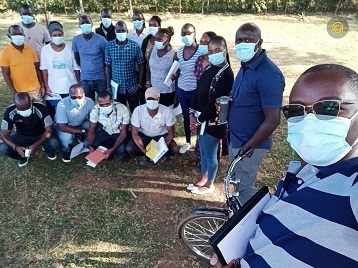Kenya

Spatial repellents have been widely used for the prevention of mosquito bites, but their efficacy in reducing mosquito borne diseases has never been evaluated in Africa. To address this knowledge gap, western Kenya was selected as a site for a cluster randomized, placebo controlled trial to estimate the impact of the spatial repellents on malaria related outcomes in an area with high baseline malaria transmission.
Study Objectives:
- To demonstrate and quantify the protective efficacy of the Mosquito ShieldTM, a new spatial repellent product treated with transfluthrin, in reducing the incidence of malaria infection in human cohorts;
- To investigate whether the spatial repellent intervention induces diversion of mosquitoes from within the intervention areas to locally unprotected individuals, thereby having a differential impact on infection incidence among protected and locally unprotected individuals;
- To measure the impact of the spatial repellent intervention on entomological correlates of transmission to set benchmark thresholds and streamline future intervention trials against other spatial repellent products by measuring only those endpoints that are correlated to protective efficacy;
- To assess the impact of spatial repellents on mosquito biting behavior by observing the changes in host seeking and biting behavior inside and outside intervention and control households.
Study Location and Population: The study will be conducted in Busia County, North West of Kisumu City where the Kenya Medical Research Institute is located. Study participants include children ages 6 months to 10 years sleeping in the study clusters. Bed net coverage is high among children under 5 and generally much lower among children 5-10. Malaria incidence and prevalence therefore tend to be highest among this age group. This will allow the AEGIS team to assess the impact on different age groups and the added benefit on top of long lasting insecticide nets.

In-Country Project Leads: Kenya Medical Research Institute and the Centers for Disease Control and Prevention
Additionally, social science methodologies and health and market analyses will provide evidence for the acceptability and scalability of implementation. To ensure the spatial repellent is adopted as a complementary vector control tool, findings will be disseminated to the scientific community, end users, and project stakeholders.
